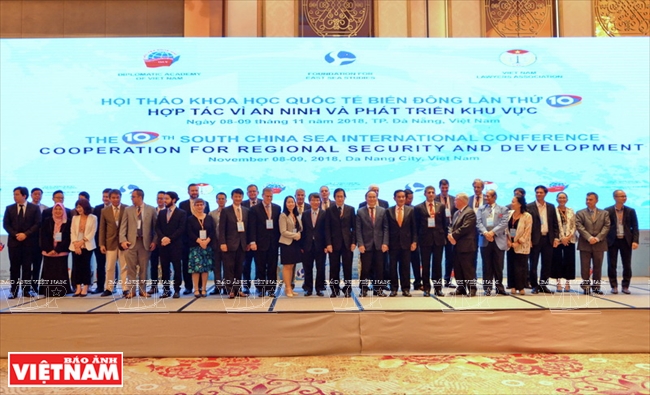
The opening of the 10th East Sea International Conference in Da Nang. Photo: Thanh Hoa / VNP

The conference has 220 participants, including 89 international scholars. Photo: Thanh Hoa / VNP
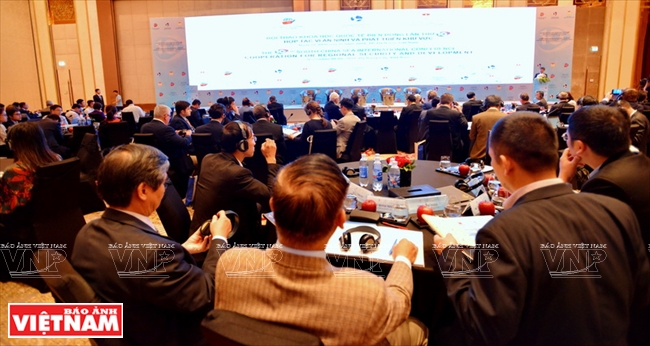
The two-day event includes eight sessions. Photo: Thanh Hoa / VNP
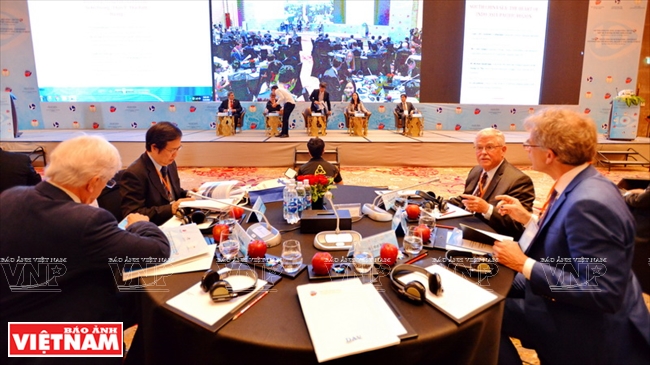
The conference discusses measures to maintain peace,
stability and development in the East Sea. Photo: Thanh Hoa / VNP
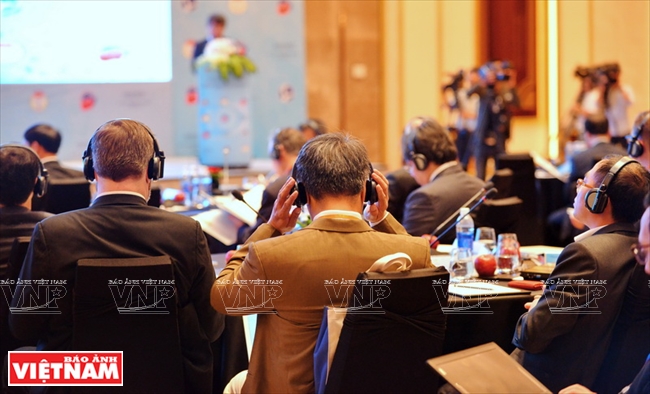
The East Sea has become an issue that receives growing interest from international scholars.
Photo: Thanh Hoa / VNP
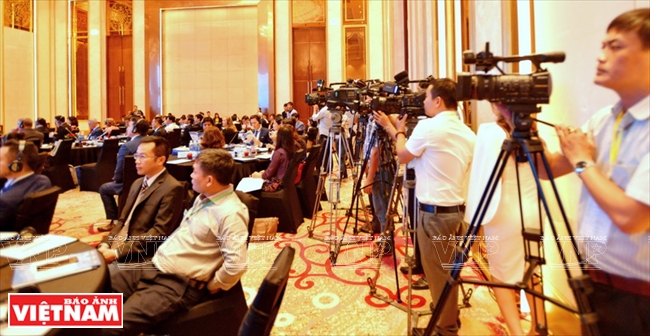
About 110 reporters from 60 local and foreign news agencies cover the event. Photo: Thanh Hoa / VNP |
Some worried about the dual-use operation of units in the name of civil works like observatories in the area.
Some newly-emerging issues that could impact security and order in the East Sea were analyzed, such as the increasing use of unmanned vehicles in the absence of related international standards.
Discussing measures to build trust and maintain peace and stability in the East Sea, scholars said parties concerned should reconsider their demands which are not in accordance with international law, including the 1982 United Nations Convention on the Law of the Sea (UNCLOS), thereby narrowing disputes and gradually settling disputes by peaceful means.
Legal experts also stressed the observance of the international law for settling disputes by peaceful means without using forces or threatening to use forces.
They warned that negotiations on a Code of Conduct in the East Sea (COC) will take much time.
Apart from COC, scholars said ASEAN member states could propose ideas to build other codes of conduct in the East Sea, including the one on unexpected encounters in the air, and standards on treating plastic wastes at sea.
As there are different interpretations of the 1982 UNCLOS and disagreement about The Hague Tribunal’s ruling about the East Sea issue, several opinions suggested that ASEAN should invite major countries to hold dialogues to reach consensus on the application of the UNCLOS as well as regulations regarding maritime freedom.

Studying the materials before a session. Photo: Thanh Hoa / VNP
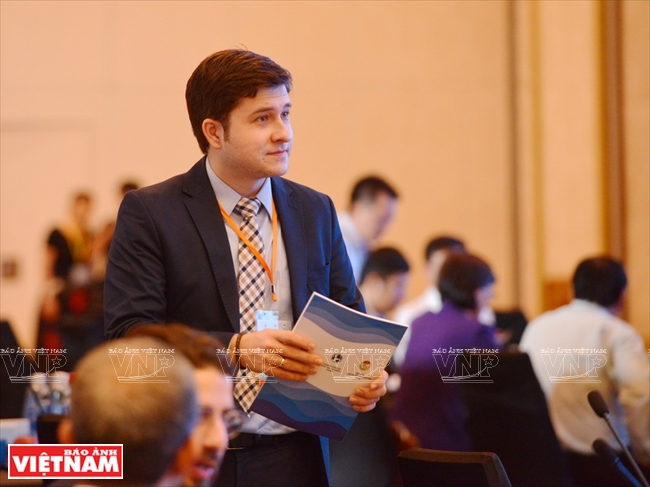
Anton Tsvetov from Russia’s Center for Strategic Research, a speaker at the conference. Photo: Thanh Hoa / VNP
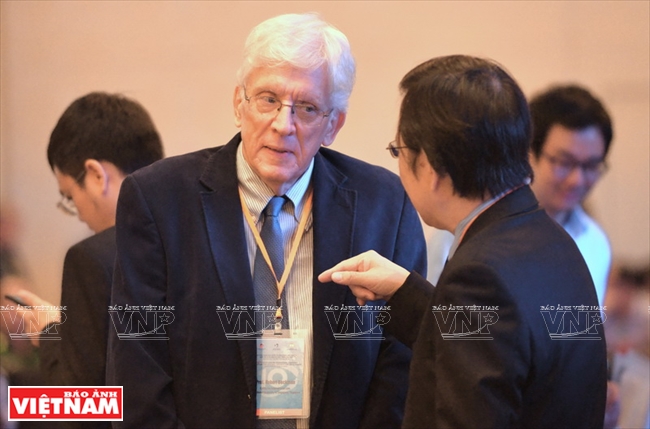
Prof. Robert Beckman (left) from the National University of Singapore’s Center for International Law
who chairs the session “Evolving Claims and Positions over the East Sea: Continuities and Changes”.
Photo: Thanh Hoa / VNP
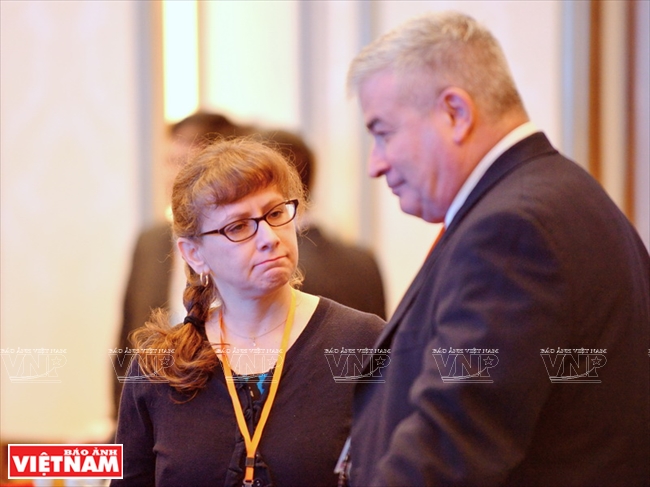
Another speaker, Cleo Paskal (left), who is Associate Fellow at the Department of Energy, Environment,
and Resources, as well as at the Asia-Pacific Program at Chatham House in the United Kingdom.
Photo: Thanh Hoa / VNP
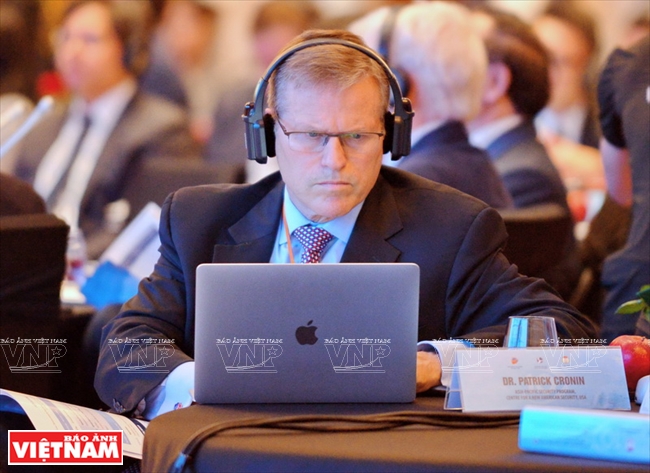
Dr. Patrick Cronin from the Center for a New American Security is a speaker. Photo: Thanh Hoa / VNP
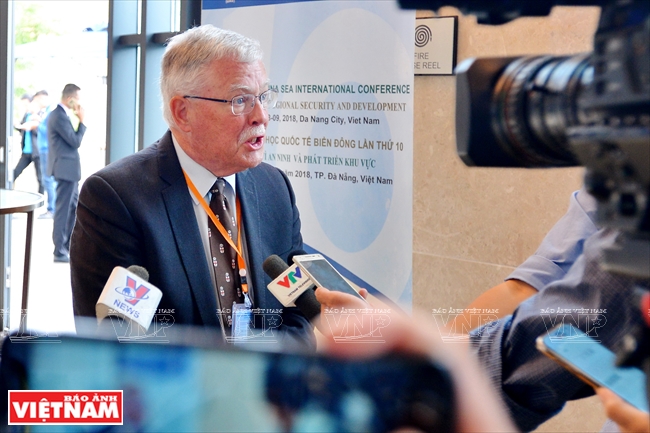
Prof. Carlyle Thayer at the University of New South Wales, Australian Defense Force Academy speaks to the press.
Photo: Thanh Hoa / VNP
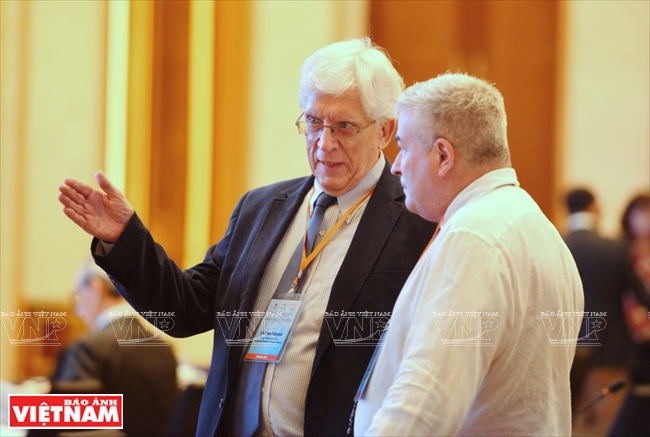
Prof. Robert Beckman (left) and Prof. Raul “Pete” Pedrozo from the Stockton Center for the Study of International Law
at the U.S. Naval War College talk on the sidelines of the conference. Photo: Thanh Hoa / VNP
|
The event included eight sessions, entitled “East Sea: the Heart of the Indo-Asia-Pacific Region”, “East Sea in the Spotlight: a10-Year Recap”, “Evolving Claims and Positions over the East Sea: Continuities and Changes”, “Major Powers: Engagements or Disengagements?”, “The Buildup of Forces in the East Sea”, “Confidence Building”, “Preventative Diplomacy”, and “Dispute Resolution, Order, and Disorder in the East Sea: Reflections”